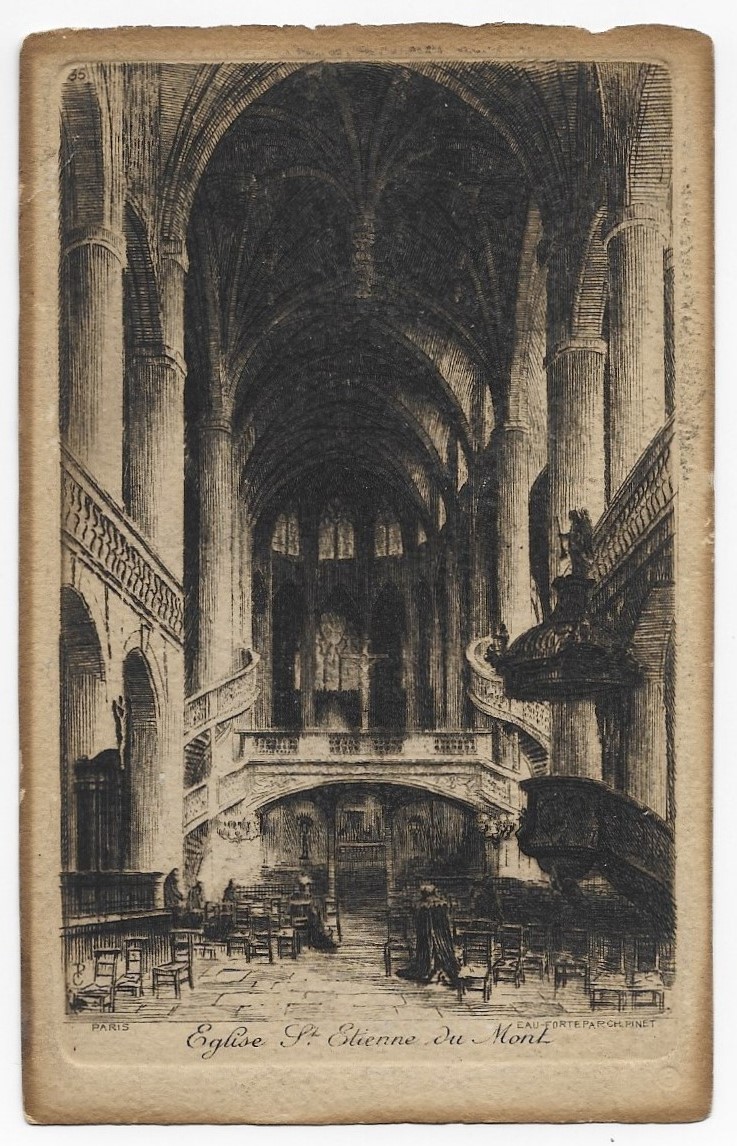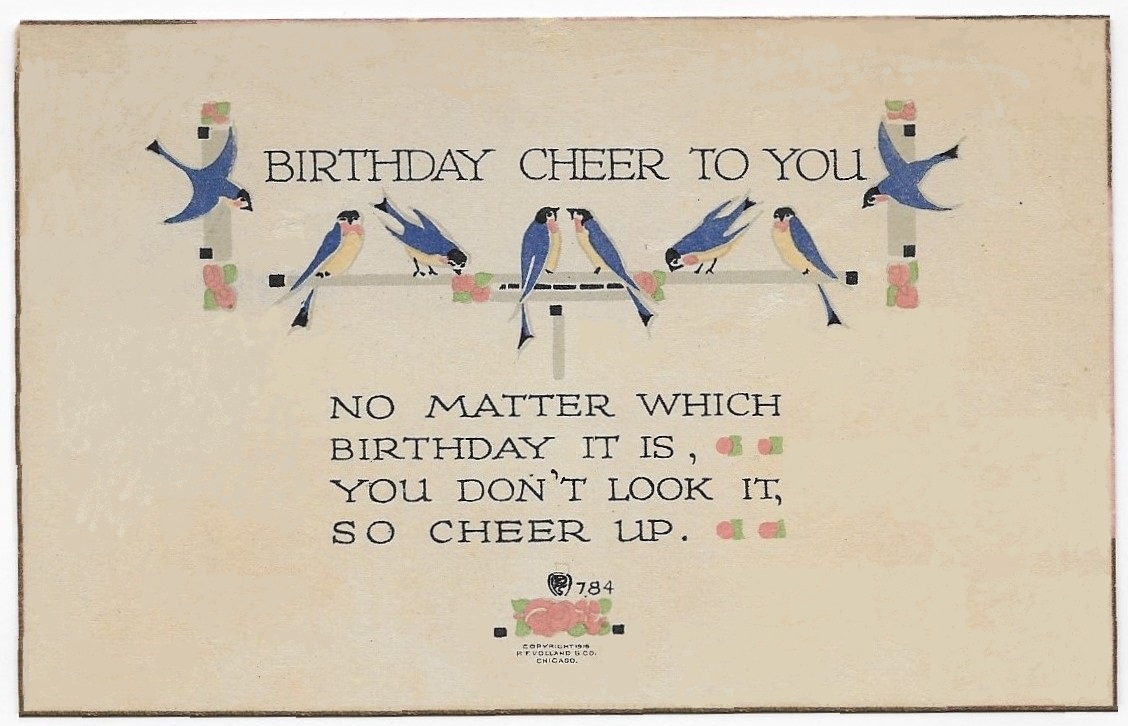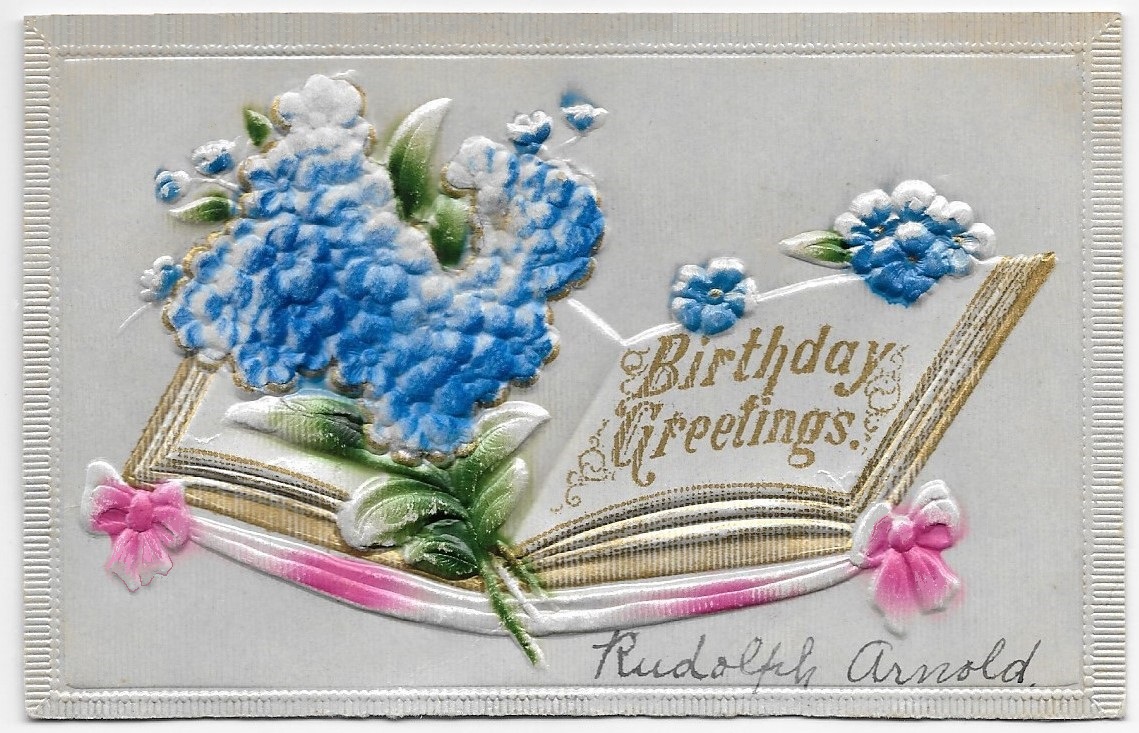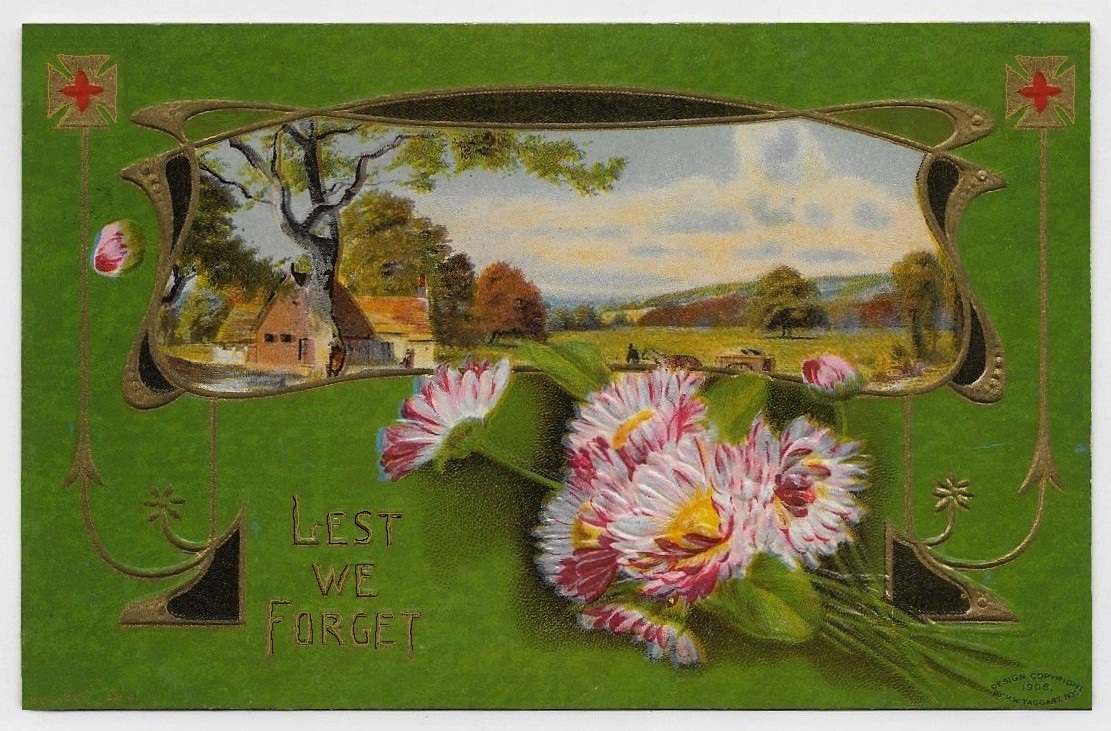This postcard was not mailed, so the provenance cannot be established clearly.
It is in the style of souvenir postcards published circa 1910-1920, but I saw similar postcards in Paris in the 1970’s and in the 1990’s -and suspect that the style has been reproduced in recent years.
For this Sunday in late summer, a remembrance of one of the oldest and most sacred spots in Paris.
On a hill (now in the Fifth Arrorndissement) above the marshy lowlands near the Seine, the Romans constructed great public works including baths, a theater, and villas.
In the 6th century, Clovis (first King of the Franks and the first Christian King) built a basilica atop the Roman ruins and he and his wife were buried there.
In later years, an abbey church was constructed beside the basilica, and later still, the basilica was replaced by the church that became St. Etienne-du-Mont.
https://en.wikipedia.org/wiki/Saint-%C3%89tienne-du-Mont
The church was constructed through years in which prevailing architectural styles changed, so the facade is an amazing combination of architectural features from the Gothic, Renaissance, and other periods.
When the nearby abbey was destroyed to construct the great Temple that became the Pantheon (by Louis the XVth), the ancient shrine and treasures related to St. Genevieve were translated to St. Etienne-du-Mont.
Due to its proximity to the Sorbonne, many notable French notables were buried at St. Etienne.
Here is an image of the exterior, shared on Wikipedia.
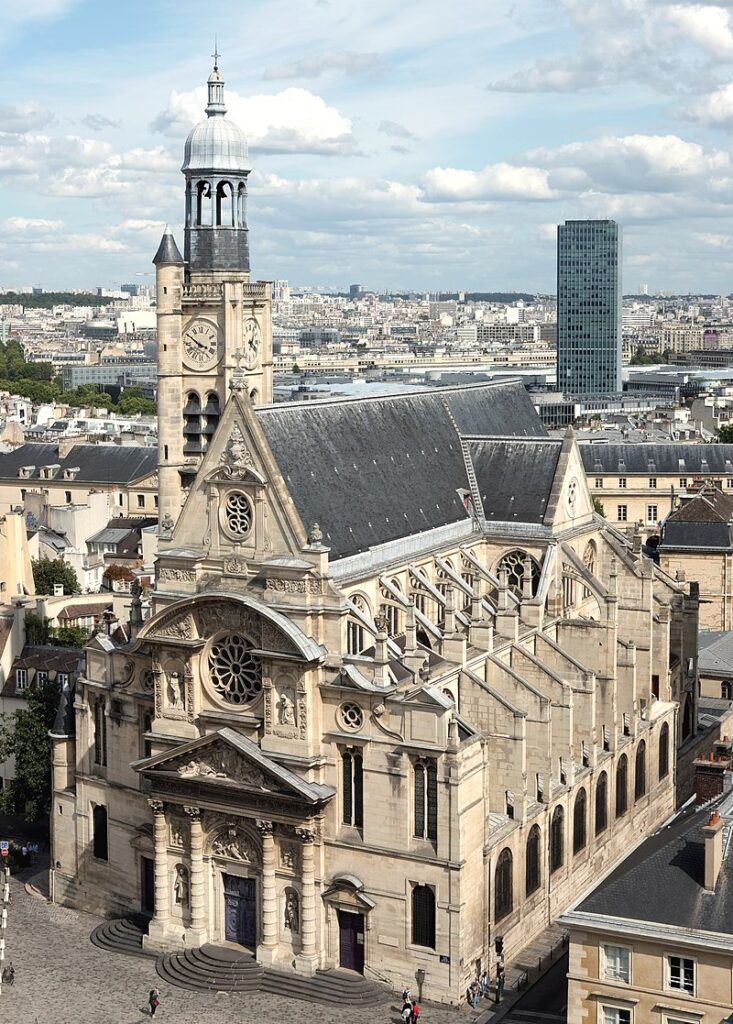
During the French Revolution, the Church of St. Etienne and the Pantheon were secularized; the relics of St. Genevieve were destroyed and the enshrined treasures were seized.
A new reliquary was constructed in the 19th century to house elements of the destroyed shrine and any remaining relics of the city’s Patron Saint.
Here is an image from the Wiki:

The Pantheon was never re-consecrated, and remains a temple to illustrious notables of the French secular state.
St. Etienne was re-consecrated and remains as one of the most beautiful, light-filled sanctuaries in Paris.
Despite the enormous rood screen of stone, erected in the bridge style, the interior is amazingly delicate – the height of the nave encloses enormous windows.
Almost fifty years ago, I first visited the church in order to see what has been preserved of the early-Christian shrine of St. Genevieve and to pay respects to the tomb of Blaise Pascal who is interred there.
https://en.wikipedia.org/wiki/Blaise_Pascal
This postcard was for sale in one of the small booksellers’ shops what one could then find in Paris.
